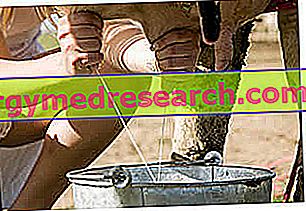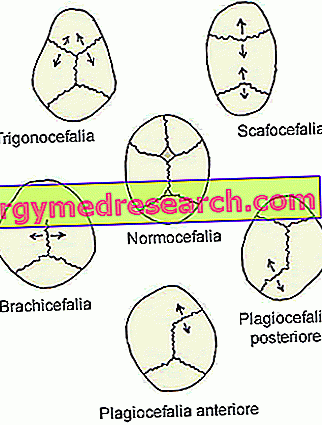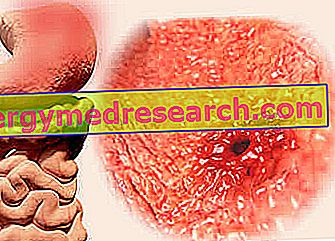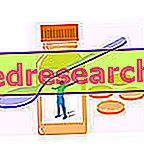Growth milk
Milk is a food; it is the excretory product of the mammary glands, therefore it represents an exclusive element of the mammalian class. The milk is secreted to favor the first physical development of the offspring (for the man around 6 months) and changes its composition throughout the weaning period. Through breastfeeding, children have the possibility of:
- Feed and grow
- Develop intestinal bacterial flora and immune defenses
- Get closer to the definitive solid food
Legislation and product categories
Milk is an extremely widespread drink; it is consumed by most of the world cultures and, as a food, must be subjected to regulations and quality controls. In Italy, drinking milk means " the regular, uninterrupted and complete excretory product of animals in good health and nutrition ".

NB . Vegetable milks, with their merits and their defects, are foods (usually added and fortified) that from the nutritional point of view CANNOT be compared to animal-derived milks; moreover they certainly cannot replace the human one.
Raw milk
Raw milk is a "traditional" food well rooted in Italian food tradition and culture; although today the most widespread product is vaccine, in the different areas of the peninsula the other types of milk are also consumed (see the previous paragraph).
The market offers a wide range of products that differ in:
- The type of animal
- Shelf life ( sterilized, traditionally pasteurized, quickly pasteurized or High Temperature Short Time [HTST - called "fresh milk" - less preservable], tatted with Ultra High Temperature [UHT - called long-life], micro-filtered )
- The fat content (whole, skimmed and partially skimmed)
- Other processing techniques such as lactose hydrolysis (delactosate milk) to facilitate digestibility.
The WHOLE milk (lipid content equal to or greater than 3.5% of the total energy) can be UHT (long-life), HTST (called "fresh" and storable for a few days), microfiltered (notoriously marketed in "bottles") blue color "and that is kept for more than 8 days) or RAW.
Raw milk is the least conservable and least digestible (see article: "Raw milk and whole milk - differences") and, although historically it has always been distributed even to retail, with the advent of conservative techniques its consumption has progressively lost by value.
Recently the breeders have organized themselves to establish an effective distribution network in "short chain" (from the producer to the consumer) that, thanks to the installation of refrigerated vending machines, is restoring the spread of raw milk. The organoleptic quality of a similar product is remarkable, however, besides being less digestible (due to the absence of homogenization of fats) it also has numerous hygienic-food constraints. Raw milk must be replenished DAILY and stored exclusively between 0 and 4 ° C, a characteristic that certainly does not compromise the distribution MA significantly limits the domestic management of the food. Moreover, paradoxical but absolutely important, raw milk SHOULD NOT be drunk RAW! That is, in order to guarantee its wholesomeness (because it contains living and active pathogenic microorganisms), raw milk should undergo a heat treatment (boiling) that inexorably compromises the typical gustatory characteristics so appreciated by some consumers.
Unfortunately, it often happens that buyers prefer to "risk their health" just to enjoy a milk that, let's face it, has a taste well above any other alternative; however, these people probably do not know the risks that can lead to the intake of excessively contaminated raw milk.
Risks of raw milk
Raw milk, even if it does not contain micro-organisms that penetrate "inside the animal" (septicemic infection), can NOT be called a sterile food. It is normal that the liquid, at the time of milking, comes into contact with some microbes present in the galactophore ducts (terminal tubules of the breasts communicating with the outside) or exposed on the extremities of the breasts; this means that, while milking a healthy animal, a raw milk is obtained containing from 103 units of bacteria forming colonies per milliliter (cfu / ml), up to 104 cfu / ml. To translate the concept into more understandable terms, it can happen that the risk of consuming raw milk is its bacterial contamination (by virtue of its nutritional abundance) and its infection or food poisoning.
The diseases contracted with raw milk are: brucellosis, anthrax, tuberculosis, listeriosis, salmonellosis, Q fever, campylobacteriosis, enterohemorrhagic colitis and staffilococcal / streptococcal infections (mastitis). NB. The possibility exists that the risk of disease due to contamination with Mycobacterium Avium subsp paratuberculosis of raw milk correlates to the manifestation of Crohn's disease.
We recall that the risk in drinking raw milk is exponentially reduced by simple pasteurization (60-65 ° C for 30 minutes or 75-85 ° C for 10-15 seconds), even if complete sterility is not obtained from living organisms, let alone from their spores. The risk of drinking raw milk also includes the possibility of contamination between the still healthy food and the faeces of the animal, or that the operators in charge of milking, due to carelessness, keep the milk in open containers and / or exposed to air, their saliva or other impurities.
The bugbear that has always alerted producers (and which should at least attract the attention of consumers of raw milk) is Listeria ( L. monocytogenes ) contamination. This bacterium, extremely resistant to high temperatures, is almost harmless for the healthy individual ... MA represents a deadly pathogen for immunosuppressed and for the fetus carried by a pregnant woman. However, in numerical terms, the largest epidemics triggered by the consumption of raw milk have highlighted the proliferation of salmonella and escherichia coli (followed by Campylobacteri and Yersinia enterocolitica). The Italian press has given particular emphasis to some cases of haemolytic uremic syndrome (HUS) associated with verocytotoxin-producing E. coli infection (VTEC) in pediatric patients, probably acquired through the consumption of contaminated unpasteurized milk .
The subject is vast and I do not think it would be helpful for readers to acquire in-depth knowledge of microbiology; nevertheless, the only prospectus of what has been said so far should favor a certain awareness of the risk related to the consumption of raw milk which - however low (thanks to the rigorous health checks on the whole supply chain) - exists and has been repeatedly emphasized by the Italian Ministry of Health. Let it be clear, everyone with their own health can choose to do what they think best, however, nutrition education is essential, especially for those (parents and restaurateurs) who take charge of managing the nutrition of others.
Bibliography:
- Food microbiology - JM Jay, MJ Loessner, DA Golden - Springer - pag. 167: 169.



